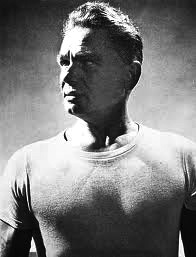A method of low impact exercise to strengthen the body in an even way, with emphasis on core endurance, fitness, flexibility and well-being.
Pilates is a complete exercise method developed by its founder Joseph Pilates over the course of a lifetime dedicated to improving physical and mental health.
Pilates is a full body conditioning programme suitable for people of all ages and abilities. It builds strength without excess bulk, creating a sleek toned body and flat abdomen. It teaches body awareness, good posture and easy, graceful movement whilst improving flexibility, strength, and core endurance.
Pilates can train several muscle groups at once in smooth, continuous movements. No other exercise system is so gentle on the body whilst giving it a challenging workout.
Joseph Pilates was born near Dusseldorf, Germany in 1880. He was a sickly child but his determination to overcome his ailments led him to become competent in a range of sports.
In 1912 he moved to England, working as a boxer and circus entertainer among other things. During the first world war he was interned, and it was while serving as an orderly in a hospital on the Isle of Man that he devised a series of exercises that helped patients recover their health.
These exercises were the basis of his method. After the war he moved back to Germany and then onto the USA. On the journey over he met his wife, Clara a trained nurse.
In 1926 they opened their first studio in New York and began to gain a reputation in the dance community, which realised the value of his method in recovering from injuries and improving technique.
He continued to teach until his death at the age of 87.
Find out more about Joseph Pilates on Wikipedia
"The Pilates Method of body conditioning is complete coordination of body, mind and spirit".
Better posture and a balanced body
More efficient breathing and circulation
Increased sports performance
Improved strength and flexibility
Engages the mind, reduces stress and improves general well-being
Strengthens the core and protects the spine
Pilates exercises are modified to encourage the correct movement and support of the spine.
When you suffer from back pain, the body will often compensate by using alternative muscles to move and support the body. This can result in Postural misalignment which, in turn, can cause pain.
By learning to move more effectively you will learn to use the right muscles and begin to correct muscle imbalances. Strengthening your back and abdominal muscles will ensure that your back is protected in everyday activities.
-
Sacroiliac joint problems including pelvic girdle pain
-
Degenerative disc disease
-
Non-Specific Low Back Pain
-
Neck and Shoulder Pain
-
Hip-replacement rehabilitation and recovery
-
Knee injury and post-operative rehabilitation
-
Pelvic Floor weakness
-
Arthritis Care
-
Parkinson's and MS Conditions
-
Fibromyalgia
The Principles of Pilates are important and always the same, no matter who you talk to.
The six principles are Breathing, Centering, Concentration, Control, Precision and Flow.
With the integration of the principles you will master the moves with grace and fluidity.
Breathing
Pilates uses Lateral Thoracic Breathing. Joseph Pilates encouraged us to take wide full breaths, filling the lungs and letting the ribcage expand. Breathing correctly can promote awareness, enhance natural movement and can calm the mind. Coordinating your breath with the movements helps to connect your mind with the whole body.
Concentration
Concentration is an essential element when connecting the mind and the body. Concentrating on alignment will aid correct muscle recruitment and allow a smoothly balanced and more precise movement. This will result in greater awareness of your body and how it moves in everyday life. This powerful mind-body connection is at the heart of Pilates
Precision
Pilates focuses on perfect and precise movement. Every movement has a purpose and when it is performed with precision, one move is worth more than several half-hearted ones.
Centering
Your centre is your "Powerhouse", which consists of your abdomen, lower back, and pelvis. In Pilates all moves originate from the Powerhouse, outwards to your limbs and upper body. With continuous practice of Pilates, you will end up with a strong back and improved posture!
Control
Muscular control is the foundation of Pilates. Control refers to the quality of the movement performed and is only improved through practice. Sloppy movements can lead to injury and therefore defeat the purpose of the exercise. By working on balance and control, Pilates teaches the body and person to work more efficiently.
Flow
Flow is often called 'fluidity' and it refers to the grace and ease Pilates exercises should be performed. There are no rigid or static moves in Pilates, instead the movement is dynamic and smooth. It should look effortless!
wickssuman1962.blogspot.com
Source: https://bridgepilates.co.uk/about-pilates/


0 Response to "In Pilates the Quality of Movement is Smooth Continuous Movements"
Postar um comentário